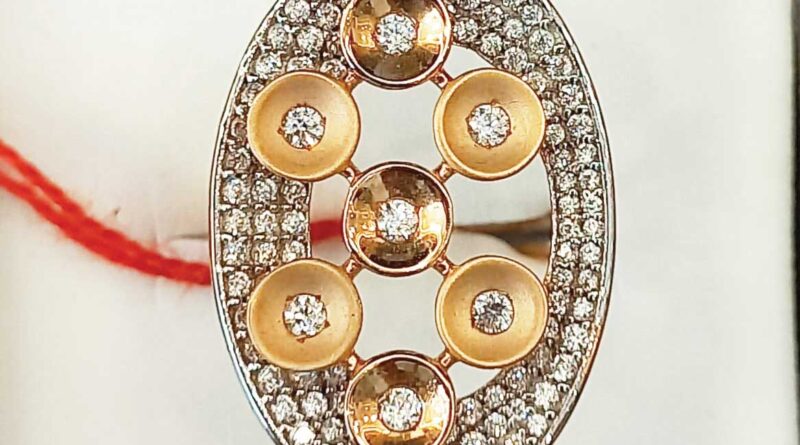Yash Jewellers | New Trends in buying gold Jewellery |Gold Colour, Carat and Purity
Decoding Caratage with Yash Jeweller’s Uday Powale
What is caratage of gold?
24 carat gold implies the purest form of gold. In order to make jewellery out of it, alloys are mixed in this pure gold, leading to the creation of 23 carat and further, 22 carat or 18 carat gold. The more the proportion of alloy to the gold, the less the caratage. Earlier, silver and copper were the prominent metals which were mixed in gold. These days, there are “Imported Alloys” or “Indian Alloys” which are mixed with pure gold. These alloys too have silver or copper of their base but also contain other metals in the right proportion. The certificate of every piece of jewellery contains this information in detail.
What details should the customers look for before purchasing their gold jewellery?
Luckily, people of today have the Bureau of Indian Standards’ (BIS’) assurance to look up to while buying gold. Today, every piece of jewellery has the triangular logo of BIS along with an HUID code. The caratage is also clearly mentioned – 958 means 23 carat, 916 means 22 carat, 750 means 18 carat gold, etc. The rate of gold which appears in newspapers is mostly for 24 carat gold without GST. According to decreasing caratage, The rate decreases as the Caratage implies the other metals with gold which affects its purity. While buying gold, the customers should also note that there is always a slight difference in the gold rate appearing in the newspaper and the rate showcased in shops – that is how trading works.

What caratage of jewellery is recommended these days, according to the trends?
These days, lighter jewellery is trending. People prefer to buy the best looking pieces which are lightest in weight because they are elegant yet pocket friendly. Getting such jewellery made in 22 carat gold is recommended. This will ensure that the jewellery stays in shape and lasts longer without breaking. In earlier times, when heavy jewellery was preferred, it used to be made in 23 carat gold.
But, 23 carat gold is more malleable. Due to wear and tear, its minute particles are lost sooner than 22 carat gold. The chances of 23 carat gold jewellery breaking are more too. Therefore, it is highly recommended to choose 22 carat jewellery and, for convenience reasons, avoid 23 carat gold.
What about 18 carat and 14 carat gold?
18 carat gold can also work well in jewellery. Nevertheless, we Indians prefer to choose gold that is both pure and convenient to use. That is the reason 22 carat gold is preferred by customers and recommended by jewellers too. In case the jewellery involves diamonds or gemstones, yes, 18 carat gold is used because it is harder in consistency and holds the precious stones better than 22 carat gold. In foreign countries, 18 carat and 14 carat gold is trending. It is possible that Indian people of the next generation, who do not believe in investing in gold but want good jewellery and accessories, start preferring 14 carat gold.
Can you explain what makes yellow gold, white gold and rose gold different?
Alloy mixing has variants of colour. Thus, if we want white gold or rose gold, we go for colour alloy mixing and end up making gold jewellery which looks different. It must be noted that the purity of gold is not affected. For example, 22 carat gold remains to be 22 carat gold, that is, 91.6% pure with coloured alloy mixed in it. Earlier, it was simply the amount of silver or copper used in gold which made the gold look brighter or reddish respectively. But it used to only lead to a difference in the tints and shades of yellow of the gold. White gold and rose gold are made using colour alloys and do not look yellow at all. Depending on the alloy used, there could be slight changes in the making charges of these jewels.
Finally speaking of gold as an investment, what are your views on Gold Bonds?
Gold Bonds are a good way of making an investment. Nevertheless, when one buys gold bonds, the person gets papers as proof of the same. On the other hand, when one buys actual gold, the person gets to own the gold itself, in the form of bars, coins or jewellery. Selling gold and encashing it is also easier than selling gold bonds which might be locked for a particular period of time and lead to a loss if broken before the maturity period. Keeping in mind the rate at which the prices of gold are increasing, investing in real gold is always advised – it can be easily redesigned into new jewellery or sold if required. Moreover, people’s decision to buy real gold not only gives them a tangible assurance of wealth but also helps local jewellery shops flourish.
Yash Jewellers, established in 1998 by Uday Powle, completed its silver jubilee last year. It has been a popular jewellery shop in Thane and, over the years, has successfully satisfied its customers with the range of jewellery available in the shop, its after sales services and its hospitality.

